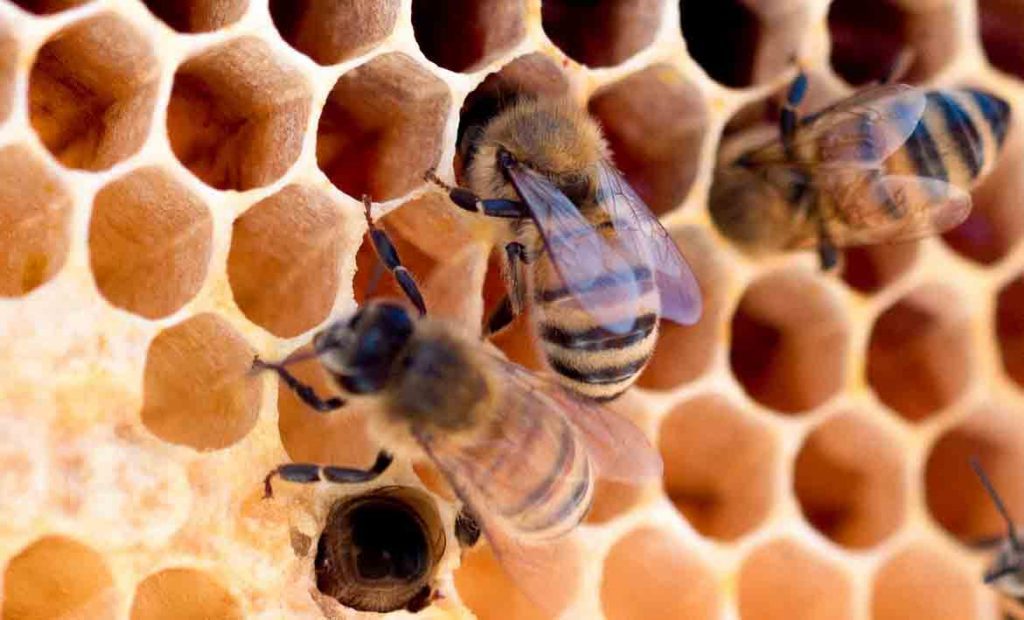Our blog article “How can this bee?” explained why bees are essential to the survival of our planet. We will now take a glance at how bees make honey and the science behind honey.
Honey is our oldest source of natural sweetness and exceptionally intense in energy. It can be consumed straight away without preparation (and without an expiration date). This means it is a highly valuable food product for us.
Honeybees collect the sugar-rich nectar of flowers in their environment. Once nestled away inside the beehive, they repeatedly consume, digest, and regurgitate the nectar. Then they create a sticky liquid honey, which is then stored as food for themselves. The colour, scent and taste of the honey depends upon the types of flowers visited. Comfrey, sunflowers, salix, catmint, hellebores, spring blossom, heathers, and wallflowers, are all popular with worker honeybees. This is because they provide the highest pollen and nectar rewards.
When a good crop is found, honeybees perform a ‘waggle dance’. This is to communicate to other worker bees with when they find a great source of pollen or nectar. This means one honeybee on your flowers could attract many more.
If you are creating a wildlife garden be mindful to plant single flowers. Honeybees and other pollinating insects all appreciate single flowers. Double flowers make it very difficult for honeybees to reach the essential pollen and nectar. These are usually flowers with extra or larger petals.
The science behind honey
Honey sales within the UK have risen rapidly due to the popularity of buying local honey. There are several benefits to honey.
Firstly, honey is a lower Glycemic Index (GI) alternative to refined sugar. It is a natural sweetener, with approximately 40% fructose and 30% glucose, plus water, pollen. It also contains other vitamins and trace minerals.
Secondly, studies have shown honey’s anti-bacterial and anti-inflammatory properties. This means it is an effective treatment for minor burns and wounds. The ancient Egyptians used medicinal honey regularly, making ointment to treat skin and eye conditions.
And finally, honey contains bioactive plant compounds and is rich in antioxidants. Studies have shown antioxidants can help to lower blood pressure, cholesterol levels and the risk of heart disease.








